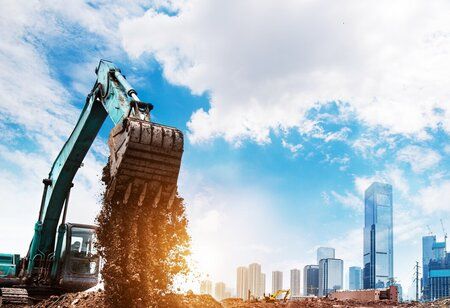Construction Sites to Use Carbon Dioxide in Lieu of Natural Sand
By Consultants Review Team
 Studies indicate that while the building sector is expanding and that prices for both residential and commercial real estate are trending upward, natural sand supplies are rapidly depleting and may run out by 2050. This is a problem with both climate change and non-renewable resources. Every year, there is an increase in carbon dioxide emissions, particularly from the production of burnt clay bricks and cement.
Studies indicate that while the building sector is expanding and that prices for both residential and commercial real estate are trending upward, natural sand supplies are rapidly depleting and may run out by 2050. This is a problem with both climate change and non-renewable resources. Every year, there is an increase in carbon dioxide emissions, particularly from the production of burnt clay bricks and cement.
Researchers at IISc's Centre for Sustainable Technologies (CST) are investigating techniques to store carbon dioxide from industrial flue gas in excavated soil used in construction and demolition (C&D) waste in order to address this issue. Then, a portion of the natural sand can be replaced with these materials. By doing this, building materials' negative effects on the environment would be mitigated, and they would also acquire benefits that would increase their suitability for construction.
According to Souradeep Gupta, an assistant professor at CST, "using and sequestering carbon dioxide can be a scalable and feasible technology for manufacturing low-carbon prefabricated building products while being aligned with the nation's decarbonization targets."
Each year, the nation generates roughly 150 million tonnes of C&D garbage, of which just 1% is recycled. Studies have demonstrated that combining natural sand with treated construction and demolition (C&D) waste in a mortar, followed by cooling and curing in a carbon dioxide-rich controlled environment, can accelerate the material's development of engineering properties and increase its compressive strength by 20–22 percent.
The group investigated using carbon dioxide in excavated soil to create cement-lime-soil composites in a more recent work. Ashutosh Dwivedi, a first author and CST PhD student, explained that "tiny crystals of calcium carbonates are formed when you sequester carbon dioxide in cement-soil materials, which reduce the fraction of medium capillary pores, densify the interfacial zones, and thus improve the compressive strength."







